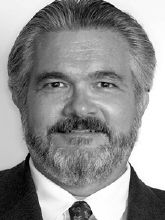Always a high point of my year, this year's annual session of the AAO in Orlando, Florida, was another triumph for the profession. The lectures were stimulating, the exhibits were informative, and the social activities were enjoyable. One topic that seemed to be on everybody's mind was that of accelerated orthodontics (AO). That's not exactly breaking news; indeed, two years ago, in my Editor's Corner of April 2014, I noted that accelerated treatment could have been the unofficial theme of that annual session. Then, as now, the available acceleration techniques could be divided into three broad categories: surgical procedures such as degloving, corticotomy, or cortical perforation; vibratory microtrauma, in which the patient bites down on a wafer that is vibrated at a high frequency, causing the teeth to jiggle rapidly in their sockets - not unlike paint in the shakers found at hardware stores; and irradiation of the teeth and periodontal tissues with various wavelengths of electromagnetic radiation, including visible or infrared light delivered by either conventional light sources or lasers. Each of these introduces some degree of trauma, or microtrauma, in the investing tissues, thereby intensifying cellular response and accelerating tooth movement.
Similar articles from the archive:
- THE EDITOR'S CORNER Accelerating Tooth Movement April 2014
- THE HOT SEAT Accelerated Orthodontics April 2016
- Accelerated Invisalign Treatment June 2001
I predicted two years ago that the surgical techniques would lag behind in popularity simply because they are, by definition, invasive. Any such method is fraught with perioperative discomfort and the risk of post-operative infection. In addition, while oral surgeons and periodontists certainly deserve to be paid for their time and effort, their fees are steep. The periodontist with whom I generally work on interdisciplinary cases charges almost as much for the surgery as I do for the orthodontics, effectively doubling the cost of treatment. Needless to say, I have had a difficult time selling any of these surgical procedures as a means of accelerating tooth movement.
The vibratory approach, which is much less traumatic than surgery, is gaining more proponents. When I tried it in my own mouth, it was not at all uncomfortable. I do confess to having sensitive oral soft tissues - I can't tolerate electric toothbrushes because they tickle my gums too much. Not many people have reported this, but the vibration device tickled my own gingiva to the point of distraction. I was eventually laughing too hard to continue for the recommended time. Despite my own intraoral quirks, this approach remains promising - even fun for most patients - and does not add a prohibitive amount to the overall fee.
The irradiation techniques are also reasonably priced and clearly the most tolerable. Emerging from the pack are the devices employing photobiomodulation (PBM), a low-level light therapy used in medicine and surgery to promote bone and soft-tissue healing. The current issue of JCO contains what I believe could be a watershed article. An international team of authors including Drs. Kenji Ojima, Chisato Dan, Yuriko Kumagai, and Werner Schupp present a case in which PBM was successfully used in conjunction with Invisalign to treat a high-angle anterior open bite in just six months, rather than the initially projected 21 months. After the first two sets of aligners were worn for the usual two weeks each, the patient was able to change aligners every three days by using a PBM device. This combination of PBM and Invisalign offers a high degree of appeal for both patient and doctor and, if only for that reason, will undoubtedly become more popular in the years ahead.
At least according to the informal panel of experts assembled by Dr. John Graham for his recent Hot Seat column (JCO, April 2016), PBM or some form of acceleration may eventually be used in the majority of orthodontic cases and, quite possibly, could become the standard of care. As several of the clinicians pointed out, long-term controlled studies are needed to quantify the potential reduction in treatment time. But Dr. Sonia Palleck may have provided the most astute summary of the current state of affairs: "There is more AO treatment than there are accelerated orthodontists." I can't wait for next year's annual session.
RGK


